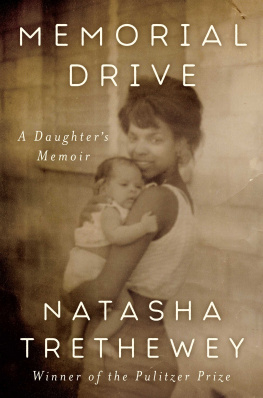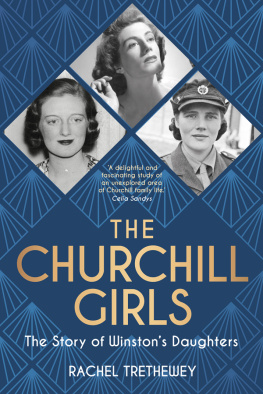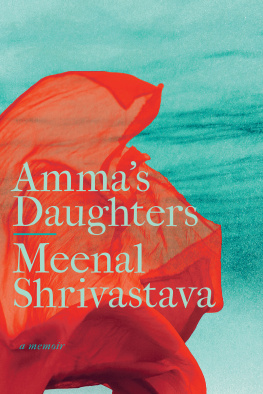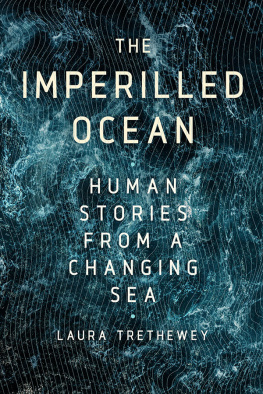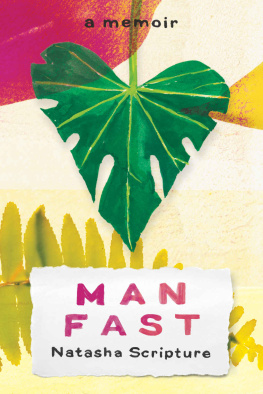Natasha Trethewey - Memorial Drive: A Daughters Memoir
Here you can read online Natasha Trethewey - Memorial Drive: A Daughters Memoir full text of the book (entire story) in english for free. Download pdf and epub, get meaning, cover and reviews about this ebook. year: 2020, publisher: HarperCollins, genre: Non-fiction. Description of the work, (preface) as well as reviews are available. Best literature library LitArk.com created for fans of good reading and offers a wide selection of genres:
Romance novel
Science fiction
Adventure
Detective
Science
History
Home and family
Prose
Art
Politics
Computer
Non-fiction
Religion
Business
Children
Humor
Choose a favorite category and find really read worthwhile books. Enjoy immersion in the world of imagination, feel the emotions of the characters or learn something new for yourself, make an fascinating discovery.
- Book:Memorial Drive: A Daughters Memoir
- Author:
- Publisher:HarperCollins
- Genre:
- Year:2020
- Rating:4 / 5
- Favourites:Add to favourites
- Your mark:
- 80
- 1
- 2
- 3
- 4
- 5
Memorial Drive: A Daughters Memoir: summary, description and annotation
We offer to read an annotation, description, summary or preface (depends on what the author of the book "Memorial Drive: A Daughters Memoir" wrote himself). If you haven't found the necessary information about the book — write in the comments, we will try to find it.
Memorial Drive: A Daughters Memoir — read online for free the complete book (whole text) full work
Below is the text of the book, divided by pages. System saving the place of the last page read, allows you to conveniently read the book "Memorial Drive: A Daughters Memoir" online for free, without having to search again every time where you left off. Put a bookmark, and you can go to the page where you finished reading at any time.
Font size:
Interval:
Bookmark:
In memory of the women who made me:
FRANCES DIXON INGRAHAM
LERETTA DIXON TURNBOUGH
and
GWENDOLYN ANN TURNBOUGH (NE),
my mother
The past beats inside me like a second heart.
JOHN BANVILLE , THE SEA
All journeys have secret destinations of which the traveler is unaware.
MARTIN BUBER
Three weeks after my mother is dead I dream of her: We walk a rutted path, an oval track around which we are making our slow revolution: side by side, so close our shoulders nearly touch, neither of us speaking, both of us in our traces. Though I know she is dead I have a sense of contentment, as if shes only gone someplace else to which Ive journeyed to meet her. The world around us is dim, a backdrop of shadows out of which, now, a man comes. Even in the dream I know what he has done, and yet I smile, lifting my hand and speaking a greeting as he passes. Its then that my mother turns to me, then that I see it: a hole, the size of a quarter, in the center of her forehead. From it comes a light so bright, so piercing, that I suffer the kind of momentary blindness brought on by staring at the sunher face nothing but light ringed in darkness when she speaks: Do you know what it means to have a wound that never heals? I know I am not meant to answer and so we walk on as before, rounding the path until we meet him again. This time hes come to finish what he started: holding a gun, he is aiming at her head. This time I think I can save her. Is it enough to throw myself in the bullets path? Shout No!? I wake to that single word, my own voice wrenching me from sleep. But its my mothers voice that remains, her last question to meDo you know what it means to have a wound that never heals?a refrain.
THE LAST IMAGE OF MY MOTHER, BUT FOR THE photographs taken of her body at the crime scene, is the formal portrait made only a few months before her death. She sat for it in a mass-market studio known for its competent but unremarkable pictures: babies coaxed to laughter by hand puppets, children in stair-step formation wearing matching Christmas sweatersall against a common backdrop. Sometimes its a sky-blue scrim that looks as if its been brushed with a feather, or an autumn scene of red and yellow leaves framing a post-and-rail fence. For moodier portraits, as if to convey a sense of seriousness or formal elegance, theres the plain black scrim.
She was forty years old. For the sitting shed chosen a long-sleeved black sheath, the high collar open at the throat. She does not look at the camera, her eyes fixed at a point in the distance that seems to be just above my head, making her face as inscrutable as it always washer high, elegant forehead, smooth and unlined, a billboard upon which nothing is written. Nor does she smile, which makes the cleft in her chin more pronounced, her jawline softly squared above her slender neck. She sits perfectly erect without looking forced or uncomfortable. Perhaps she intended to look back on it years later and say, Thats where it began, my new life. I am struck with the thought that this is what she must have meant to do: document herself as a woman come this far, the rest of her life ahead of her.
The thought of that has always filled me with despair, and so for years I chose other stories to tell myself. In one version, she knew she would soon be killed. I know she had gone to see a psychic for entertainment with some friends from work; shed told me as much, though she never said what shed learned. Around that time she had also taken out several life insurance policies, and so for years I told myself she must have been preparing for the inevitable, making surein her last few weeksthat her children would be taken care of after she was gone.
In reality, if the psychic told her anything it was most likely something promising about her futureromance, perhaps, or hopeful predictions about the new job shed just taken as personnel director for human resources at the county mental health agency. I know that most likely the life insurance policies were simply one of the benefits of that job: shed have signed up for them during the open enrollment period for new employees. Still, the narrative of her making plans, stoically aware of what was to come, comforts me. I cant bear to think of the alternative, cant bear to think of her in that horrible moment, the sudden realization of her imminent death after allowing herself to believe she had escaped. Perhaps the truth lies somewhere between her hope and her pragmatism.
Hindsight makes me see the portrait differently nowhow gloomy it isas if the photographer meant to produce something artistic, rather than an ordinary studio portrait. Its as if he made of the negative space around her a frame to foreground some difficult knowledge: the dark past behind her, her face lit toward a future upon which her gaze is fixed.
And yetundeniablysomething else is there, elegiac even then: a strange corner of light just behind her head, perhaps the photographers mistake, appearing as though a doorway has opened, a passage through which, turning, she might soon depart. Looking at it now, with all I know of what was to come, I see what else the photographer has done. Hes shot her like this: her black dress black as the scrim behind her so that, but for her face, she is in fact part of that darkness, emerging from it as from the depths of memory.
* * *
NEARLY THIRTY YEARS AFTER MY MOTHERS DEATH I went back for the first time to the place she was murdered. Id not been there since the year I turned nineteen, when I had to clean out her apartment, disposing of everything I could notor would notcarry with me: all the furniture and household items, her clothing, her large collection of records. I kept only a few of her books, a heavy belt made of bullets, and a single plant she had loveda dieffenbachia. Throughout my childhood it had been my responsibility to tend it, every week, dusting and misting the upper leaves and snipping the browned lower ones. Be careful when you handle it, my mother warned. A small precaution, seemingly unnecessary, but there is a toxin in the sap of the dieffenbachia; it oozes from the leaves and the stems where they are cut. Dumb cane, the plant is called, because it can cause a temporary inability to speak. Struck dumb, we say when fear or shock or astonishment renders us mute; dumb grief, when the grief is not expressed in uttered words. I could not then grasp the inherent metaphor of the plant, my relationship with my mother, what it would mean that she had made its care my duty, while warning me of its danger.
When I left Atlanta, vowing never to return, I took with me what I had cultivated all those years: mute avoidance of my past, silence and willed amnesia buried deep in me like a root. Nor could I have anticipated then that anything would ever draw me back to that city, to a geography that held at every turn a reminder of a past I was determined to forget even as I tried to honor her memory in every way I knew how. Indeed, going back for work, after accepting a university faculty position, I thought I could circumvent my former life, going out of my way to avoid at least the one place I could not bear to see. Until I had to.
To get there, I had to drive past landmarks that took me back to 1985the county courthouse where the trials were held; the train station from which my mother traveled downtown to work; the DeKalb County police station at the intersection of Highway 285; the bypass loop around metro Atlantaand make my way down Memorial Drive, a major eastwest artery once named Fair Street. It originates in the middle of the city, Memorial, and winds east from downtown ending at Stone Mountain, the nations largest monument to the Confederacy. A lasting metaphor for the white mind of the South, Stone Mountain rises out of the ground like the head of a submerged giantthe nostalgic dream of Southern heroism and gallantry emblazoned on its brow: in bas-relief, the enormous figures of Stonewall Jackson, Robert E. Lee, and Jefferson Davis. Not far from its base is the apartment we lived in that last year, at the 5400 block of Memorial, number 18-D.
Font size:
Interval:
Bookmark:
Similar books «Memorial Drive: A Daughters Memoir»
Look at similar books to Memorial Drive: A Daughters Memoir. We have selected literature similar in name and meaning in the hope of providing readers with more options to find new, interesting, not yet read works.
Discussion, reviews of the book Memorial Drive: A Daughters Memoir and just readers' own opinions. Leave your comments, write what you think about the work, its meaning or the main characters. Specify what exactly you liked and what you didn't like, and why you think so.

